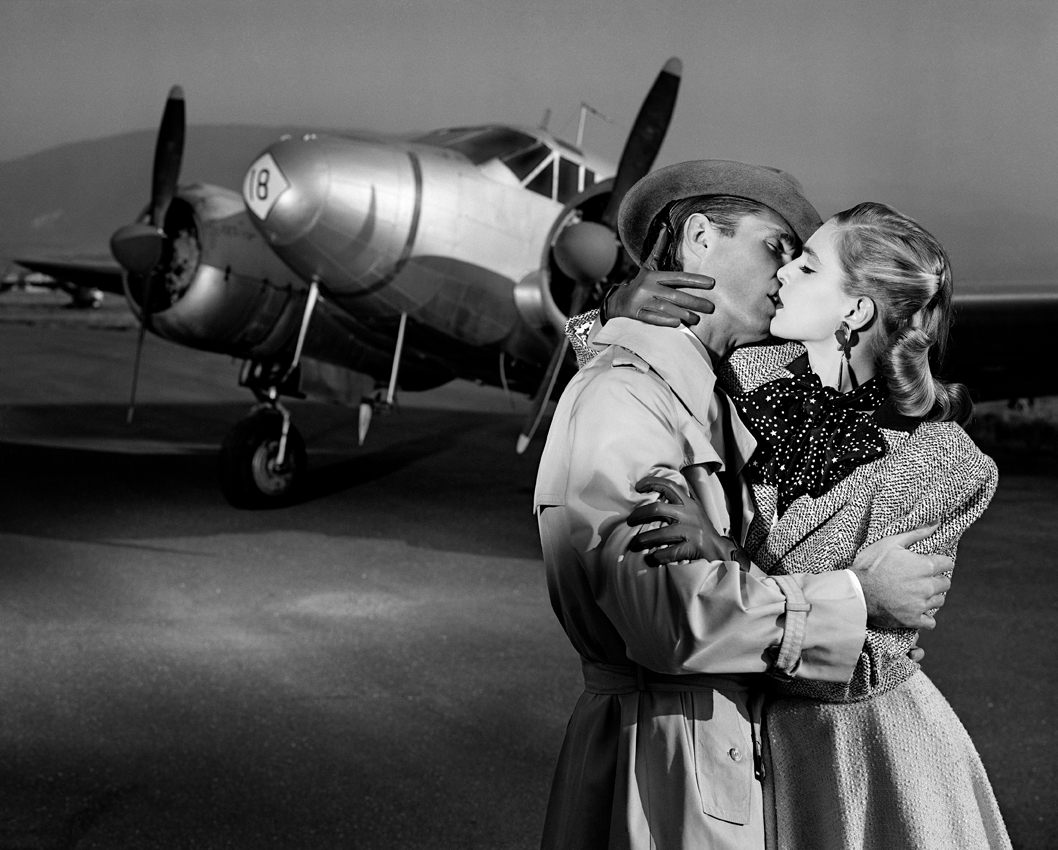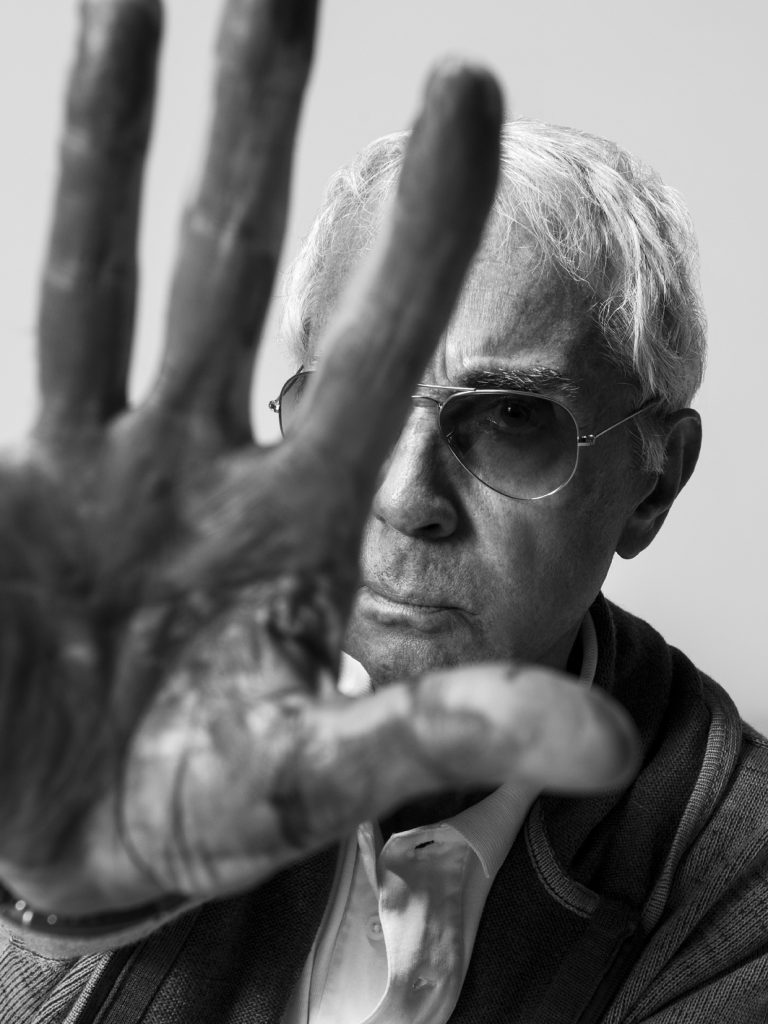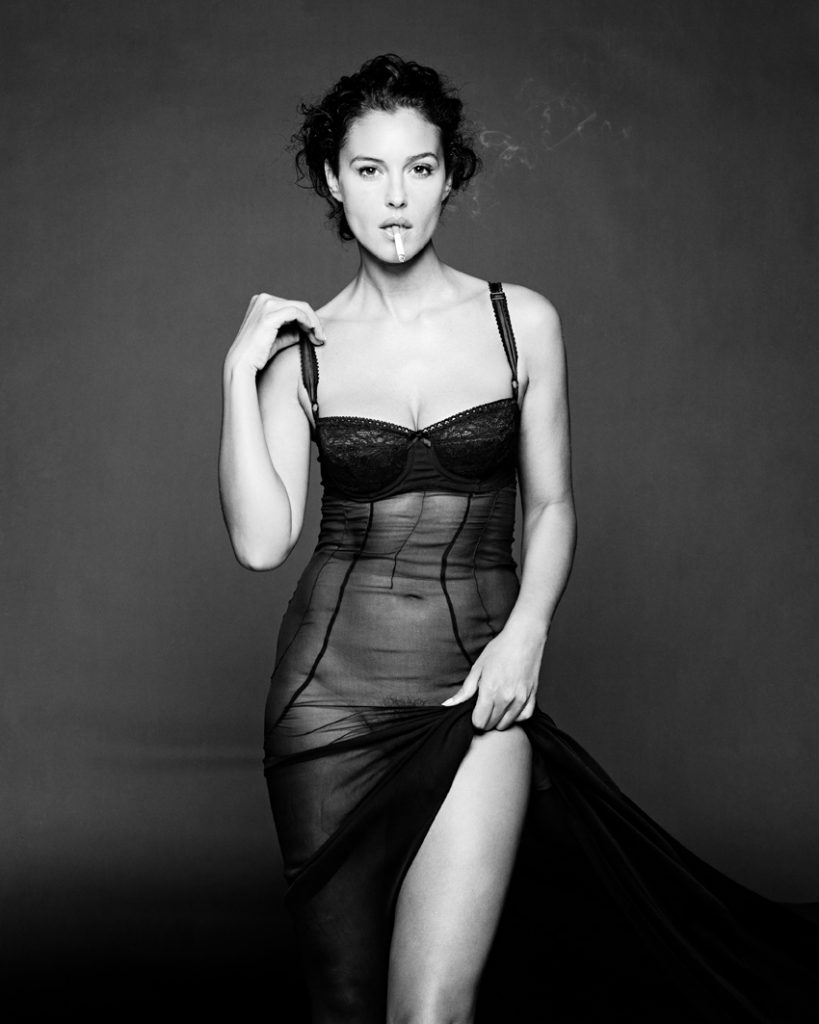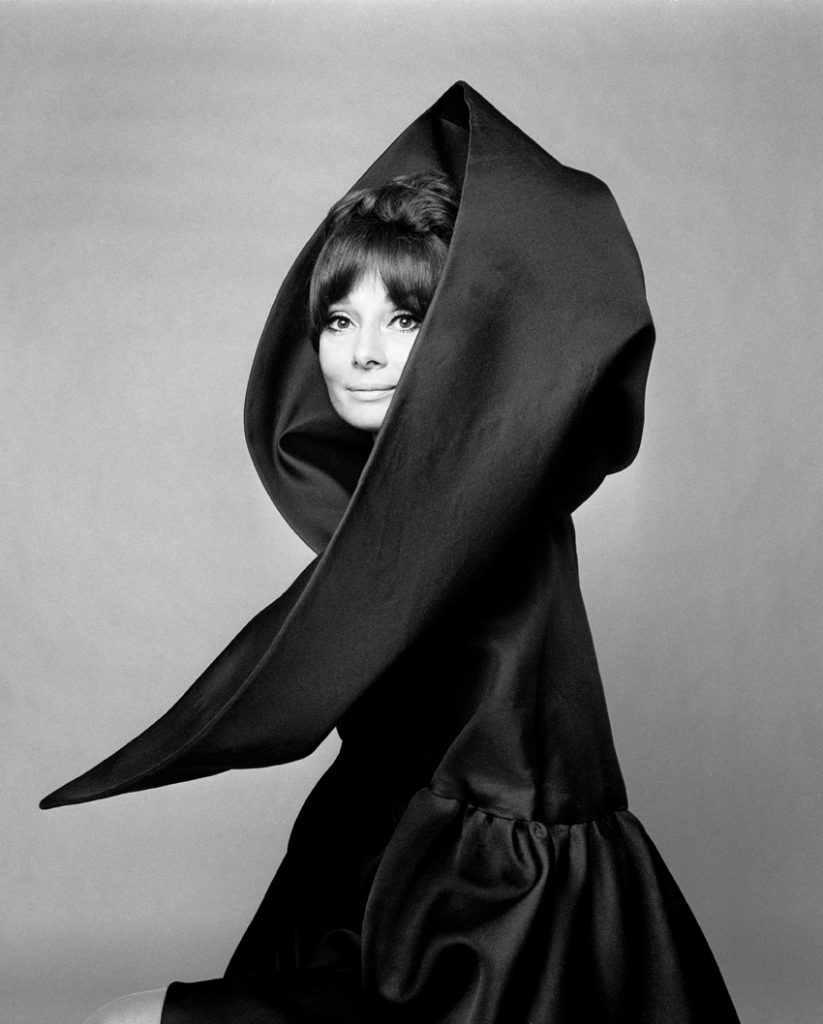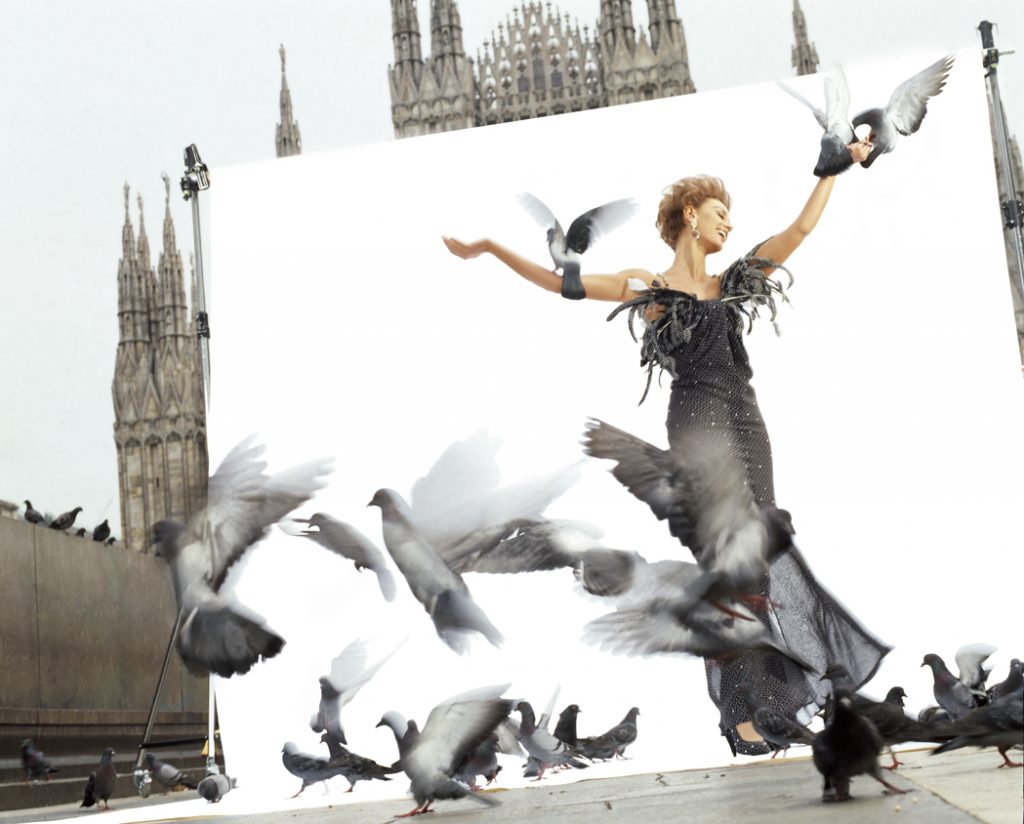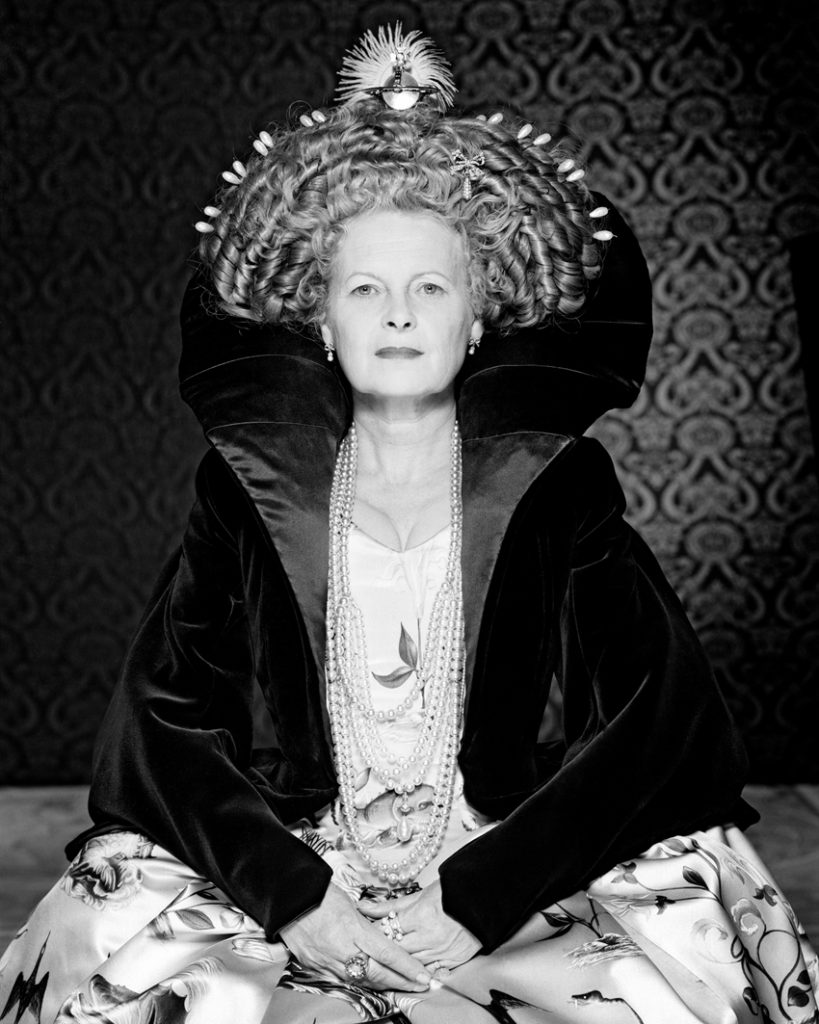For nearly 60 years, Gian Paolo Barbieri has been at the forefront of international fashion and art photography. Collaborating with Valentino to invent today’s modern advertising campaign, Barbieri’s work has graced the pages of Italian, American, German, Russian and French version of Vogue, L’Officiel, GQ, and Vanity Fair.
Barbieri’s groundbreaking commercial campaigns for: Gianni Versace, Giorgio Armani, Yves Saint Laurent, Gianfranco Ferrè, Valentino and Vivienne Westwood.
Ranked as one of the fourteen top fashion photographers in Stern magazine, Barbieri has exhibited at the Victoria and Albert Museum and at the National Portrait Gallery in London, at the MAMM of Moscow, at the National Museum of Zurich, at the Contemporary Art Center of Vladivostok and at the Kunsforum in Vienna.
His highly stylized and sophisticated images have been collected in several books, including Artificial (1982), Madagascar (1995), Tahiti Tattoos (1998), Equator (1999), History of Fashion (2001), Body Haiku (2007), Dark Memories (2013) and Skin (2015). Most recently, Barbieri has collaborated with Bransilav Jankic to release Flowers of My Life (2016), which debuted during Milan Fashion Week.
Interview by Alessia Locatelli
How did you discover your passion for fashion photography?
It started when I was in school with friends. We did the first year of accounting. We were sixteen, and photographed our meetings. We loved the cinema, the theatre and started writing verse for plays, historical situations, romances – we even remade films in 8 mm format. I also went to Cinecittà to look for work because I understood my world was one of photography and film, even if I didn’t yet understand exactly what that meant for me. In Rome, to pay my way, I would take test shots for young guys at Cinecittà with my first little camera and then develop the film. The guesthouse I lived in allowed me to use the bathroom at night, so I printed the photos there. I would put them under the bed to dry, and deliver them the next morning. Then someone saw my shots and told my father, who asked me to show him the photographs and – even though they were totally amateur – he said to me: ‘You have an amazing sensitivity and are cut out for fashion photography.’ I was shocked, not even knowing what fashion was. In Italy, the concept of Fashion didn’t yet exist, the magazines would buy ready-made photo shoots, done in France. When I had returned to Milan, I received a letter one day telling me to present myself at 11 am at Tom Kublin’s [studio] – the photographer who worked for Harper’s Bazaar America – in Paris, where I would work as his assistant, doing collections. They were the hardest twenty days of my life, but I learned everything about photography and fashion. He worked at night, because during the day, the clothes were with the buyers. When Kublin died from an illness, I was initially rather stunned. But then I decided to go back to Milan, where I bought an attic space and opened a study, calling it: Studio Barbieri. From there, I began my career.
How much of the refined aesthetic and atmosphere of your shots – often outdoors – has to do first with your experience as a theatre actor, and then with your familiarity with Luchino Visconti and Federico Fellini cinematography?
Italian cinema, with the neorealism of Visconti, Pasolini, and Rossellini, helped me understand that – with few resources – you can create masterpieces. American cinema, having more possibilities, has taught me to understand the importance of lighting, camera positioning, and of [types of ] lenses used.
Is there a photographer from the past who has inspired you?
My mentor, my north and my south, was Richard Avedon. I said to myself: ‘I want to understand, go to Avedon.’ I went to America but Avedon didn’t meet with me. I ended up meeting Avedon fifteen years later. I was in Paris for a catalogue and he was working in the same studio. When Vogue and Bazaar America worked with Avedon, they wanted all of the portraits done only by him. I hadn’t yet finished my work. I was in the hallway, and the director of Vogue America came over and asked me if I was ‘Mr. Barbieri.’ I turned around and behind her there was Avedon, who came over and said: ‘I’ve wanted to meet you, Barbieri, I’m a great admirer. I collect all of your most beautiful photos.’ Years later, Isa Stoppi explained to me that Avedon had some of my photos in his studio and had said to her ‘I can’t photograph you any more, because I could never take photos like the ones Barbieri took of you.’
Which shoots opened the door to success for you?
I did some shoots for the magazine ‘Novità’ in 1962. Shortly afterwards, that magazine became Vogue Italia. And in 1965, I did my first cover. By some twist of fate, the quality of my photos and the modernity of my style – so fresh and new – surprised the magazine’s editors.
By working for Vogue Italy, USA, and France you’ve had the opportunity to immortalise some of the most beautiful models and divas of our time – Audrey Hepburn, Jerry Hall, Vivienne Westwood, Eva Malmström, Aly Dunne, Mary Jonasson, Veruschka, Anjelica Huston, and the Italians – Isa Stoppi, Ivana Bastianello, and Monica Bellucci. From these names, is there one in particular you loved immortalising time and again, or an incident you remember with pleasure and would like to share?
I was lucky, because I worked in an era when models were models. In the sense that there was plenty of diversity between them; each of them had their own personality. It was the same with the actresses. Many had flaws which became strengths. I liked faces that were imposing, interesting, even if not defined, not beautiful. The models were much more committed to the work, they loved it more, and they were also willing to do test shoots for free. Then it all collapsed, because fashion designers began paying more, which all went to the models’ heads. The models we used at the time were women; their physiques were more developed, built in a different way. From decade to decade, in the fashion world, women have aesthetically and physically changed. Today, unfortunately, the models are all rather similar, there is less personality and culture.
Working with stars for me has been as easy as ever. In all of them, I have noticed a great kindness and willingness to cooperate. Monica Bellucci was very willing to be photographed naked. While she didn’t want to at the beginning of the session, after having seen my test shots, she was happy to do nude photos. I had the good fortune to meet Anjelica Huston in her brief modelling career. She was very sensitive and gave herself to every situation. She was also very good with makeup. Jerry Hall was the very symbol of sensuality. I remember she used a lot of hair movement which gave her great sexual energy. In 1969 in Rome, when I photographed Audrey Hepburn, she arrived with her slippers because then, she said, she wouldn’t dirty my white background. This is an example of the cooperation that was built to obtain aesthetic results of excellent quality, with synergy between subject and photographer.
For you, which of the Hahnemühle papers provides the greatest harmony between your ideas and photographic performance?
Generally, there are three Hahnemühle papers I always use for my prints. Photo Rag 308gr, Fine Art Baryta 325gr, and William Turner 310gr. The latter I use mainly for black and white, because with it I can bring out the deep blacks. It has the right brightness result, and has stable durability over time for my photographic works.
Would you like to tell us about a project you are working on?
At the moment, I’m working on a personal project inspired by the English poet Shakespeare. It includes quotations from his most famous tragedies, characters, scenes and sonnets, 400 years after his death.
I also have a new book out called Flowers of My Life, a photography book featuring my shots alongside poems by Branislav Jankic. The original prints for the project were exhibited in my studio, and printed on Hahnemühle’s Fine Art Baryta paper. (http://fioridellamiavita.com/exhibition)
But the most interesting news is certainly that, in January 2017, the Gian Paolo Barbieri Foundation was born. It exists to spread my work and name as an international photographer. It is also committed to promoting photography and the arts in younger generations, by organising awards, courses, workshops, and all that is connected to visual culture – following the creative path laid by Gian Paolo Barbieri. The Foundation also acts as an organisation for controlling, protecting and regulating all the material produced in the studio, in accordance with conservation and quality regulations established at the international level. The project also stems from the need to preserve archives, a key component in the narrative of the history of Fashion and Aesthetics, from 1960 to the present day. It is an important visual trail, for the annals of memory and the community.


